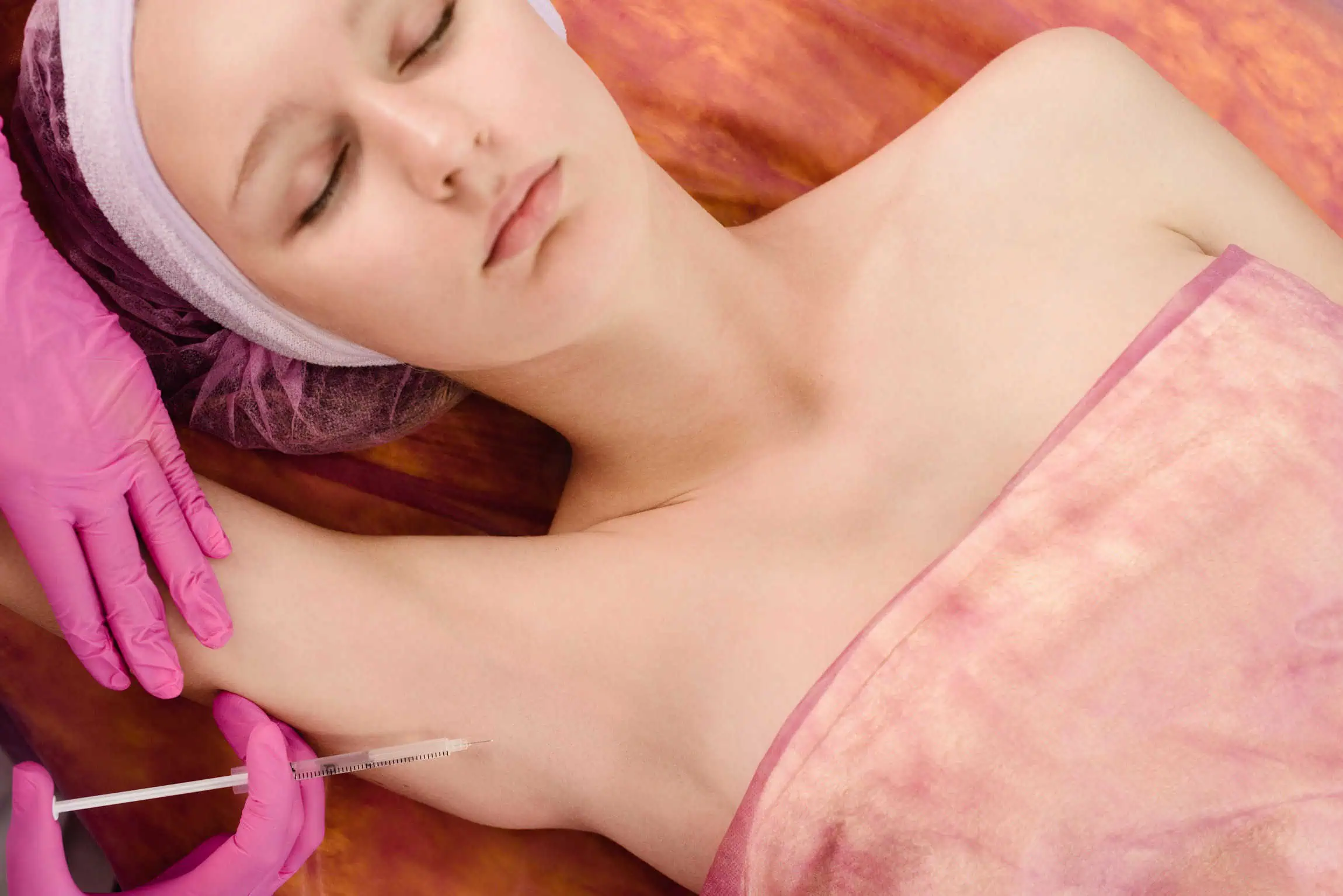Hyperhidrosis in New York, NY

Hyperhidrosis in New York, NY
Hyperhidrosis is a medical condition characterized by excessive sweating that goes beyond what is necessary for regulating body temperature. This condition can affect various body parts, including the underarms, palms, soles of the feet, and face. Individuals with hyperhidrosis often experience significant discomfort, as the excessive sweating can interfere with daily activities, lead to social anxiety, and cause skin irritation. Treatment options for hyperhidrosis include topical antiperspirants, oral medications, Botox injections, iontophoresis, microwave therapy, and surgical interventions, each aiming to effectively reduce or manage the symptoms.
Causes and Variations of Hyperhidrosis
Hyperhidrosis is primarily caused by overactive sweat glands, which can be triggered by various factors such as genetics, medical conditions (like hyperthyroidism or diabetes), and certain medications. A hyperhidrosis condition can be divided into two categories: primary focal hyperhidrosis, typically localized to specific areas and often having a genetic link, and secondary generalized hyperhidrosis, usually associated with an underlying medical condition and affecting more significant body areas.
What Are The Different Procedures for Treating Hyperhidrosis?
Topical Antiperspirants
Topical antiperspirants are often the first line of treatment for hyperhidrosis. These products contain aluminum chloride, which temporarily blocks the sweat glands. They are applied directly to the affected areas, usually at night, to reduce daily sweating.
Oral Medications
An anticholinergic, such as an anticholinergic medication, is prescribed to reduce sweating by inhibiting sweat gland activity. These medications are typically used when topical treatments are ineffective. However, they may have side effects, including dry mouth and blurred vision.
Botox Injections
Botox (botulinum toxin) injections are a popular treatment option for hyperhidrosis, especially underarm sweating. A Botox injection significantly reduces sweating by blocking the nerve signals that activate sweat glands. The effects of Botox injections can last for several months before requiring repeat treatments.
Iontophoresis
Iontophoresis is a noninvasive treatment that uses a mild electrical current to temporarily disable the sweat glands. This method is used to treat hand and foot hyperhidrosis in a series of 20 to 40 minute sessions.
Surgical Interventions
Surgical options, such as sympathectomy, involve cutting or clamping the nerves that control sweating. This procedure is considered when other treatments have failed and is usually reserved for severe cases of hyperhidrosis. While effective, surgery carries the risk of complications, such as compensatory sweating in different body areas.
What Are the Results of Treating Hyperhidrosis?
Treating hyperhidrosis can significantly improve the quality of life for individuals affected by the condition. Patients can engage in daily activities comfortably and confidently after receiving long-term relief from excessive sweating through most treatments. Treatment options vary depending on the severity and location of the condition, and there are a variety of methods available. Book an appointment at Park Plaza Dermatology in New York, NY, to explore the most suitable treatment options for hyperhidrosis.
Benefits of Treating Hyperhidrosis
- Reduces excessive sweating
- Improves daily comfort and confidence
- Enhances social interactions
- Prevents skin irritation and infections
- Reduces the need for frequent clothing changes
- Minimizes body odor
- Improves grip strength in the hands
- Reduces stress and anxiety associated with sweating
- Offers long-lasting results with appropriate treatment
- Increases overall quality of life
Frequently Asked Questions
Oversweating, also known as hyperhidrosis, is the overproduction of sweat beyond what is necessary to regulate body temperature. It is diagnosed through a physical examination and patient history, sometimes accompanied by tests to determine the severity of the sweating.
Overactive sweat glands, genetics, underlying medical conditions, or certain medications can cause hyperhidrosis. There is often a genetic component to focal hyperhidrosis, while secondary generalized hyperhidrosis may be a result of other health problems.
Botox injections are highly effective in reducing sweating in the treated areas, particularly the underarms. The results typically last for several months, after which the treatment may need to be repeated.
Side effects vary depending on the treatment. Topical antiperspirants may cause skin irritation, oral medications can lead to dry mouth or blurred vision, and surgical options may result in compensatory sweating. It is important to discuss potential side effects with a healthcare provider.
While no permanent cure for hyperhidrosis exists, many treatments offer long-lasting relief. Microwave therapy and surgical interventions, in particular, can provide more permanent results, but each patient’s experience may vary.
To schedule a consultation for hyperhidrosis treatment and explore the most effective options for your condition, you can book an appointment at Park Plaza Dermatology in New York, NY.
